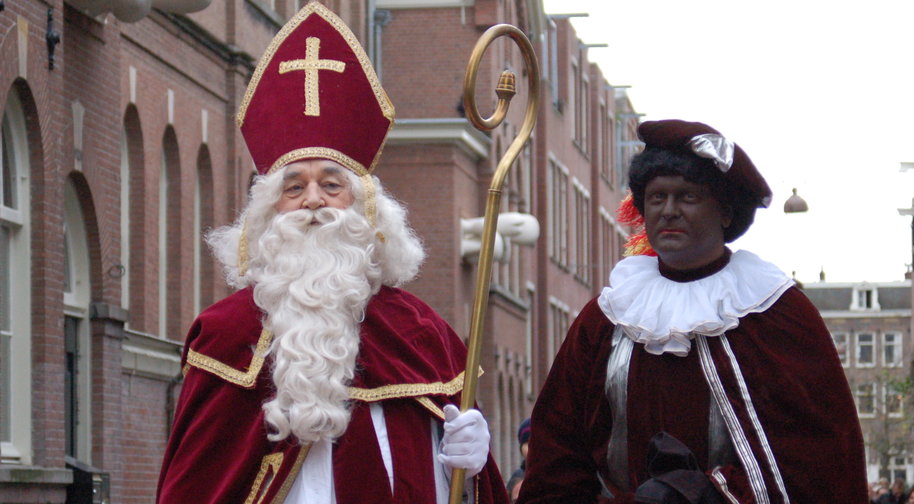
The Netherlands may not have any Confederate statues to pull down, but the country has its own racially charged issues with its past and its cultural institutions – most notably these days the controversy surrounding Zwarte Piet.
‘Black Pete’ is the servant of Sinterklaas, a Dutchified version of Saint Nicholas and the spiritual ancestor to Santa Claus.
Sinterklaas on his grey horse and Zwarte Piet with a bag of gifts traditionally roam the nation’ rooftops in the night of 5 December. They deliver candy and toys down chimneys to kids who have been good all year long. However, if they’ve been bad, they risk a whipping by Zwarte Piet – or get a lump of coal instead of a present.The association of Saint Nicholas with Spain (whence he comes every year, by boat) and with a servant of apparent Moorish extraction is a fairly recent tradition, emerging from a re-telling of the Sinterklaas legend in a book by an Amsterdam school teacher in 1850. Zwarte Piet’s appearance and name were standardised as late as the 1920s.
For Dutch kids during the rest of the 20th century, Zwarte Piet was a fixture of the festive season, an exotic distributor of sweets, a thrill enhanced by his (increasingly theoretical) power to whip those undeserving of candy.
But that was then. Gone are the days when the Netherlands was an exclusively white society, in which few were bothered by Piet’s caricaturesque persona: a good-humoured and obedient servant in big curly wig, huge red lips, giant earrings – and of course personified by a white person in blackface.
Mainstream culture has tried (and mostly failed) to counter the increasing view of Zwarte Piet as an offensive grotesquery.
In some versions of the story, Zwarte Piet is a former slave, serving Saint Nicholas in perpetuity as thanks for his liberation. Others say Piet is black only because of the chimneys he goes down – although that does not explain the frizzy hair and other attributes which complete the racial stereotype.In recent years, Dutch people of colour (and others) have started taking umbrage at that stereotype. In 2011, a movement arose to do away with the blackface caricature, and with the power dynamic between white master and black servant as a hangover of colonial attitudes.
The discussion about the colour and position of Zwarte Piet revealed huge fault lines in Dutch society – mostly along racial lines. More than 90% of white Dutch perceive Black Pete as a figure of clownesque fantasy, rather than as a colonial-era stereotype of slavery….
The post This Sinterklaas Season Too, Black Pete Stays (Mainly) Black appeared first on FeedBox.